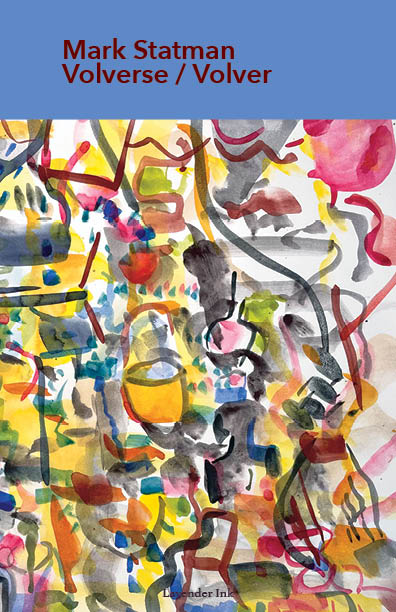
Part 2 MARK STATMAN: MEXICO AND THE POETRY OF GRIEF AND CELEBRATION
Part 2 of my interview with Mark Statman looks closely at Mark’s Latin American poetic influences, his life in Mexico and ends with an extract
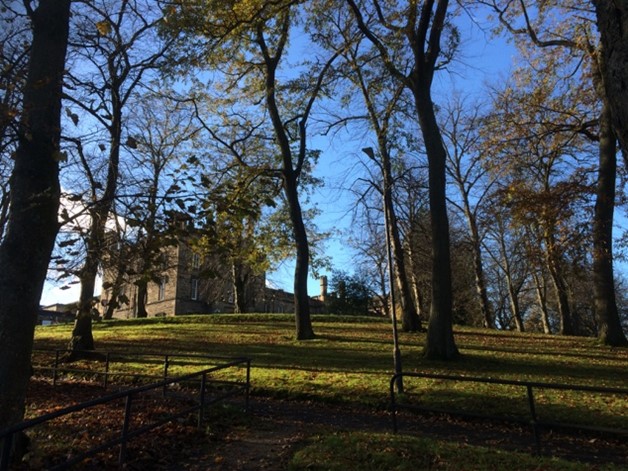
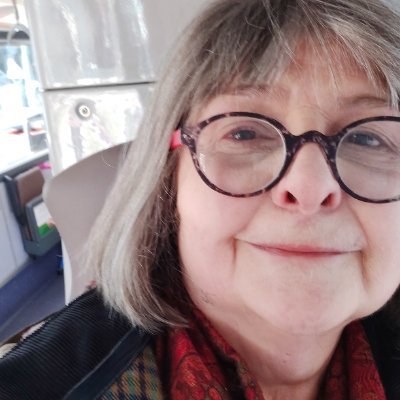
I interviewed Gillean McDougall from Glasgow, who edited the collaborative projects Honest Error (on Charles Rennie Mackintosh and his wife Margaret Macdonald) and Writing the Asylum (on Gartnavel Royal Asylum) and facilitated the group the prescription at the Royal College of Physicians and Surgeons of Glasgow. Gillean was shortlisted for the Jenny Brown Associates Debut 50+ Award and her first novel, The Legacy of Gabriel Thorne,, is being read by publishers.
Leslie: You began as a classical musician and broadcaster. Tell us some of the highlights of this career and how it gradually led you to be a writer. What are the differences/similarities between broadcasting and writing?
Gillean: My family was musical, my dad a music teacher. I still consider music my first love, and studied at university and then conservatoire, playing piano, flute and harp and also singing. I’m familiar with the musical canon in a way I never will be with the literary one. I loved the complexity of learning to write harmony and counterpoint; I could hear what I was writing sitting at a desk far away from a piano, which was helpful in exams! I understand different kinds of notation, form and rhythm, and these all have equivalencies in writing. Music making is also a fabulously social thing, preparing me for taking part in and running writing groups. I became a PA with BBC Radio 3 in the 1980s, when it was a hotbed of intellectual activity and creativity. From there I moved to announcing (timing skills and performance experience helped greatly) and finally worked as a network director in TV. Because of my time in broadcasting, I cope well with deadlines and that plate-spinning skill of managing a number of project elements at the same time.
It’s not all been plain sailing – as a BBC announcer you need verbal fluency and simply read so many words. When I started writing at first, I used to think hang on, who is actually speaking here? Is this me, or am I just parroting something I’ve read? It took a while for my own writing voice to settle.
Leslie: What was A Year to Find My Father? How did you approach a memoir in terms of style, narrator voice and characterisation (poetic or documentary)? How did it relate to your project Writing The Asylum?
Gillean: or my MLitt at the University of Glasgow, I explored madness as a theme in a number of different pieces of writing – my father suffered bad mental health in his 60s, a very upsetting time for the family. A lot was revealed that had affected him in his early years ( he was a WW2 conscientious objector), and I found in writing a way of processing that shared and generational pain and making something of beauty out of it. So when I progressed to my PhD, an idea for a long-form work started to emerge. I think all my writing shares a simplicity of expression with occasional poetic excursions!
Walking the grounds of Gartnavel, a former asylum near my home in Glasgow, I observed the changing landscape over the course of a year and could weave that writing together with family memory, the music that we shared and loved, and the history of the asylum. A Year to Find My Father was the result and was shortlisted for the Mslexia Memoir Prize in 2021. And as is so common, that project had within it the seeds for my next major undertaking, Writing the Asylum.

By this time, I knew the Gartnavel archive well, and it was rich with patient histories and other memories which I wanted to share with others and bring to wider knowledge.
Leslie: Writing The Asylum is a community writing project with an unusual brief that you ran. Tell us about how it began, grew and developed. What are all the generic reasons you chose this challenging subject and what did you get out of it in terms of emotional/intellectual/historical and humanistic insights?
Gillean: I won some funding from University of Glasgow/Wellcome Trust, allowing me to invite other writers on board in a creative exploration of a geography, both physical and imaginative, I’d come to love so much. My PhD research had taken me to the Gartnavel archive, held at Glasgow’s Mitchell Library, where the patient stories from the 1840s onwards seemed very relevant and even similar to experiences of mental ill health today. But these stories remain hidden – if they stay forgotten, then we’ve forgotten these people twice. Once when they’re incarcerated in the asylum and then again afterwards. I found this element of archives a beautiful and delicate path to tread and was lucky to have 27 other writers and artists to explore it with me. Group walks at the asylum led to workshops and discussion culminating in a website which has proved popular with writers, academics, and all readers. The creative responses are very varied and frequently very moving – the poet walking the landscape in the shoes of a dead partner, the impact of a family suicide, the power of ‘desire paths’ in landscape, the imagined backstory of a 19th century inmate. There’s more understanding of mental ill health now than when my father was ill in the 1980s, and many initiatives seeking to help patients and families. But still room for more reflection, and deeper creative exploration of the mind and its workings.
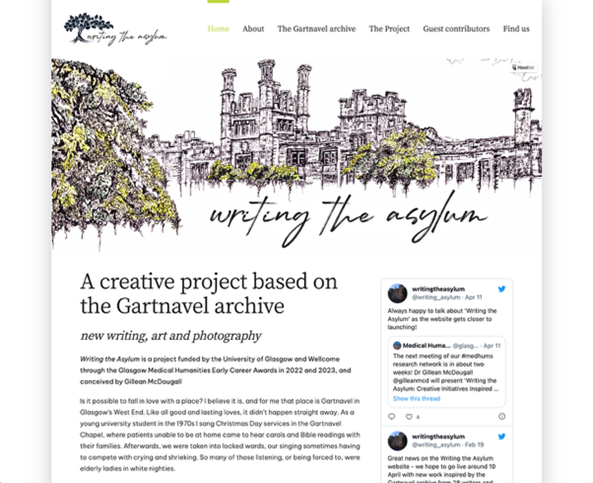
Leslie: How did you develop the storyline & characters for your debut novel, The Legacy of Gabriel Thorne? What advice did you take from Curtis Brown and how have you edited it? How has your writing changed and developed as a result of writing it?
Gillean: Once again, the novel emerged from the Gartnavel archive and project, but I didn’t want to feature identifiable patients’ stories – Dr Gabriel Thorne works at the fictional Applefields Asylum. In the course of my father’s treatment, I’d met professionals who seemed just as mad or flawed as the patients, so I turned the idea on its head, writing about a young doctor, the state of his mind and events which return to haunt him years later. The 1912 timeline weaves together with a present day one where Gabriel’s hidden story is discovered, setting some ghosts to rest. I realised that once again I was exploring and resolving the deep pain of my dad’s illness and the generational effect of mental ill health, which is in itself a difficult legacy in need of exploration.
I took a course with Curtis Brown Creative which was invaluable as I worked on the novel, and that’s where I finished the first draft. Our tutor was Chris Wakling, and his encouragement to just firstly finish the draft and then make it the best it can be, was invaluable for our group, which is still in touch. There have been eight drafts of the book so far, and I’ve learned a lot about structure and energy in bringing a long story to a satisfactory conclusion.
Leslie: You also ran a creative writing group, ‘the prescription’, mining the archives of the Royal College of Physicians and Surgeons, Glasgow. Tell us what you found as a group, what you learned, how you used it and the outcomes of the project. What would you pick out as the particularly creative aspects of this project?
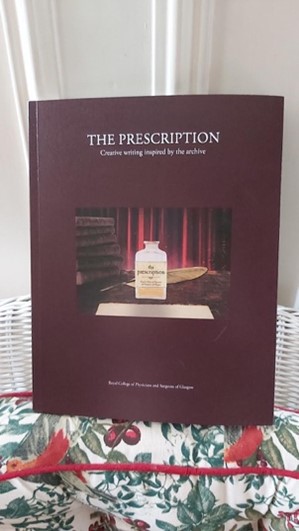
Gillean: That was a happy project in the College archive which holds so much of Glasgow’s medical history. Medical professionals who were skilled writers worked alongside excellent writers who like me have a deep interest in medical archive as a conduit to understanding of humanity. And of course we had the considerable input of the College’s Heritage team of historians and librarians, so it was very collaborative with workshops looking at items from the archive, presentations by guest experts and a final anthology of our work. Like the Gartnavel project, each writer found something magical to inspire – medical cabinets, early photographs of the first brain tumour patient, the physick garden, pain relief equipment for childbirth…it was hard to stop!
Leslie: Would you like to comment on what’s documentary and what’s fictional and how you bring these two approaches together in your writing?
Gillean: It strikes me that each one of us is our own archive. We hold so many experiences and memories – the documentary of our lives – that we inevitably draw on in our own writing. Sometimes we don’t even know we’re doing it! An organised historical archive is different, but both are fertile for exploration as long as any ethical responsibilities are held together with the fire of creativity. Creative non-fiction is enjoying huge growth at the moment and the boundaries between it and more fictional writing are increasingly stretched and blurred, which I think can only be good. Debates about death and dying feed in too, encouraging a new landscape of creative reference.
I’m working on a second novel, about a present day search for missing church art associated with a Glasgow scandal in the 1900s – I’m deep in research digging about in churches and art galleries but with a liberating sprinkle of fictional characters. A delightful balance, much needed to see me through the tough challenge of a first draft!
ABOUT LESLIE TATE’S BOOKS:

Part 2 of my interview with Mark Statman looks closely at Mark’s Latin American poetic influences, his life in Mexico and ends with an extract
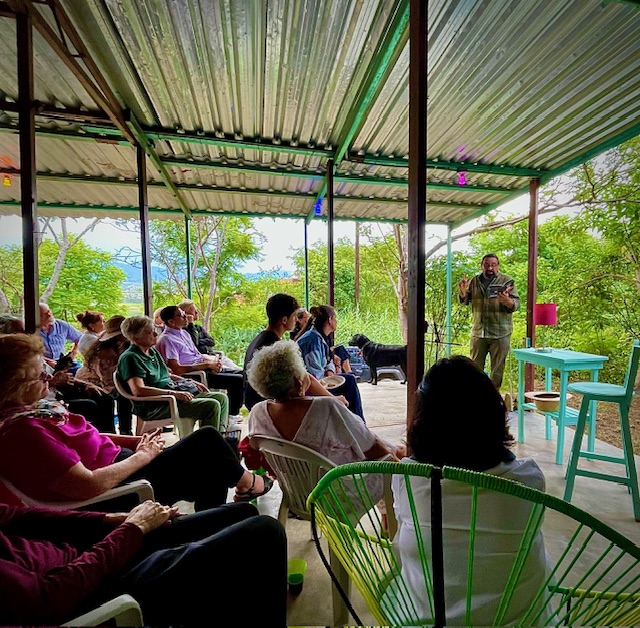
I interviewed international poet and translator Mark Statman about Volverse/Volver, his 14th published collection. Mark, who has won national arts awards, is Emeritus Professor of Literary
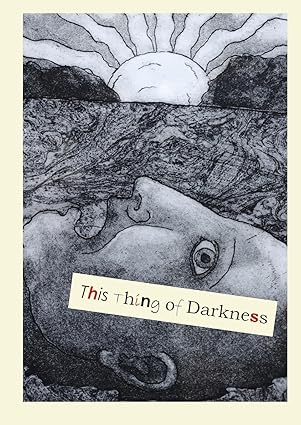
I interviewed Lisa Dart, finalist in the Grolier, Aesthetica and Troubadour Poetry Prizes and author of The Linguistics of Light (poems, Salt, 2008), Fathom (prose
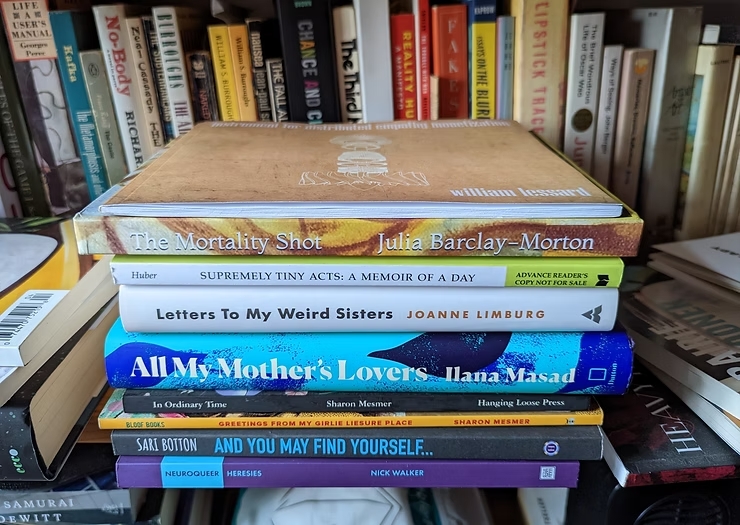
I interviewed writer Julia Lee Barclay-Morton about her experience of autism. Julia began as an experimental dramatist in New York, moving to the UK to

I interviewed Gillean McDougall from Glasgow, who edited the collaborative projects Honest Error (on Charles Rennie Mackintosh and his wife Margaret Macdonald) and Writing the
| Cookie | Duration | Description |
|---|---|---|
| cookielawinfo-checkbox-analytics | 11 months | This cookie is set by GDPR Cookie Consent plugin. The cookie is used to store the user consent for the cookies in the category "Analytics". |
| cookielawinfo-checkbox-functional | 11 months | The cookie is set by GDPR cookie consent to record the user consent for the cookies in the category "Functional". |
| cookielawinfo-checkbox-necessary | 11 months | This cookie is set by GDPR Cookie Consent plugin. The cookies is used to store the user consent for the cookies in the category "Necessary". |
| cookielawinfo-checkbox-others | 11 months | This cookie is set by GDPR Cookie Consent plugin. The cookie is used to store the user consent for the cookies in the category "Other. |
| cookielawinfo-checkbox-performance | 11 months | This cookie is set by GDPR Cookie Consent plugin. The cookie is used to store the user consent for the cookies in the category "Performance". |
| viewed_cookie_policy | 11 months | The cookie is set by the GDPR Cookie Consent plugin and is used to store whether or not user has consented to the use of cookies. It does not store any personal data. |
One Response
Seems a interesting read,I remember gilleon Mcdonald at BBC Scotland.i came across a don’t know if it was TV programme or you tube price about the patients speaking and visiting the Gartish asylum in gartcosh near Glasgow it was a few years ago I remember seeing a friends wife in the programme Frances shergold who was treated for a mental illness it was so good I’ve looked for this piece of film to no avail.hopefully gillean has came across it I’ve also tried to find Francis as her husband Tony passed away in 1990 and she was speaking about her time in gartcosh.many thanks for the story you’ve put together gerry nicol.